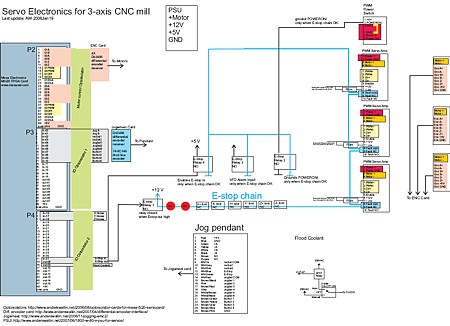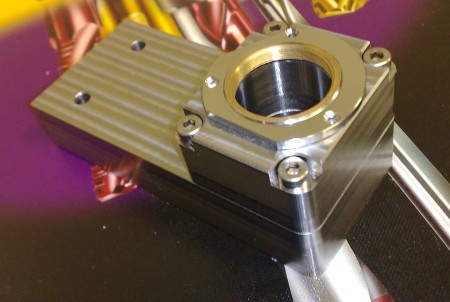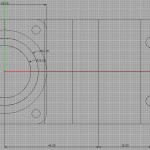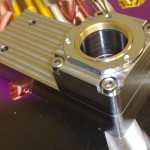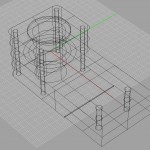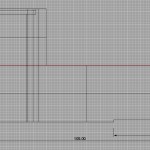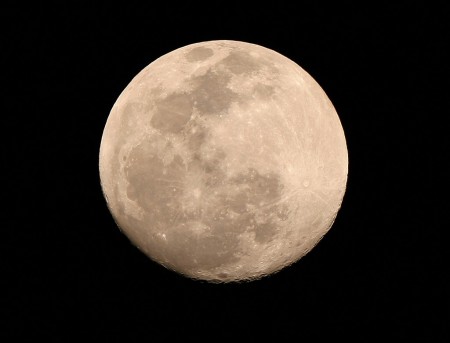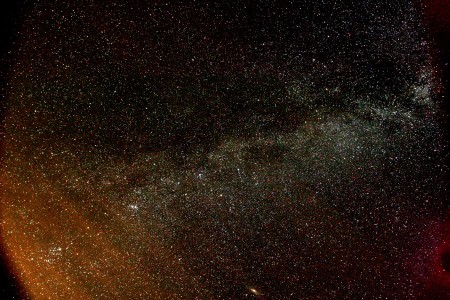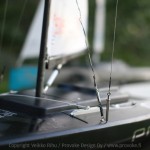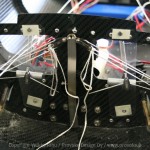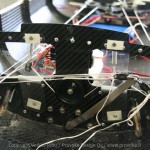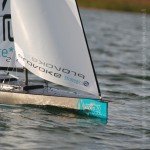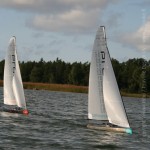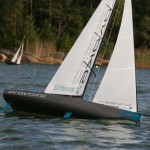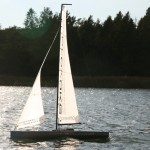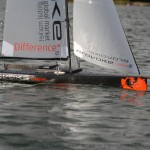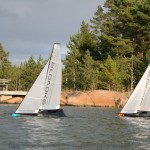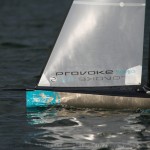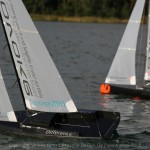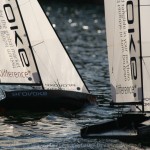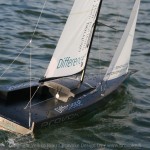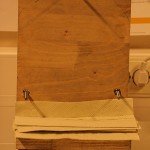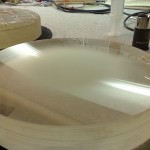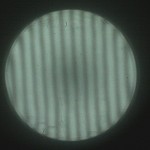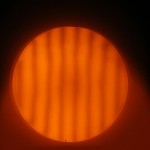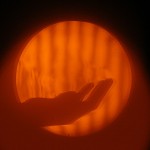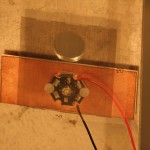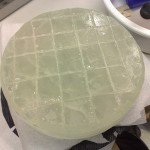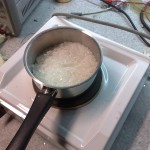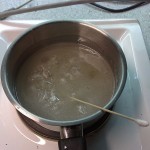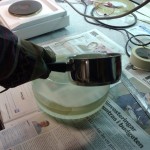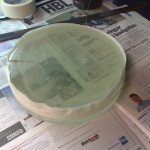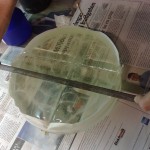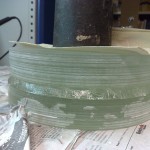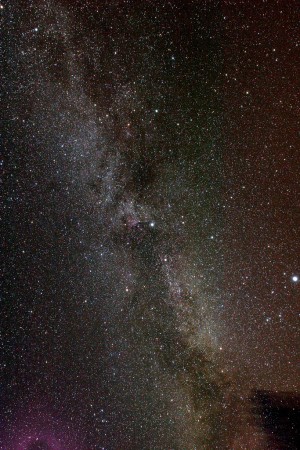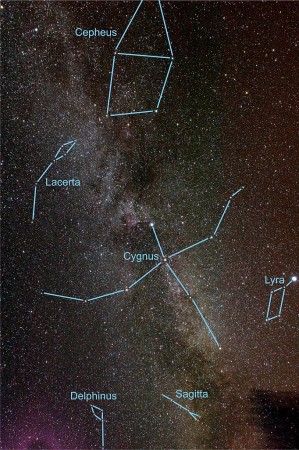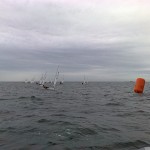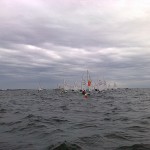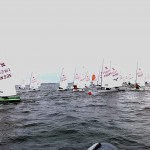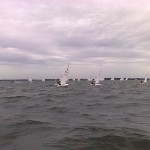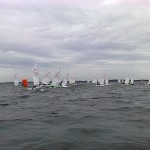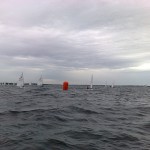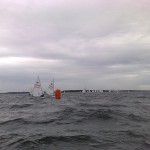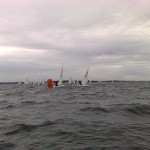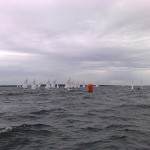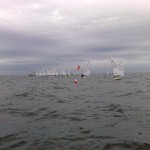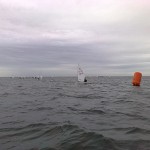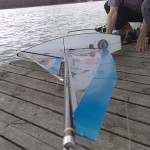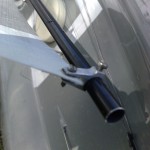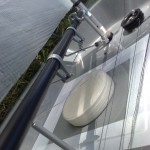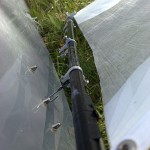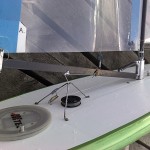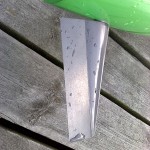By popular demand, a schematic which roughly shows the electrical connections of our cnc-mill setup. Most of it fits inside one box (also shown here). The m5i20 I/O connectors are on the left, followed by the optoisolator cards. E-stop chain in the middle, servo-amplifiers and motors to the right. Jog wheel at the bottom. The small VFD board I made later is not shown.
Nikon TE-2000 objective holder in steel
I'm fitting some more equipment around a Nikon TE-2000 microscope, and the stock objective turret is in the way. Machined this objective holder in steel yesterday.
Moon
Cassiopeia
A single 8 minute iso800 exposure of Cassiopeia through a Canon 17-40/4L lens at 17mm and F/5.6. The Andromeda galaxy (M31) is visible at the bottom center.
From the same night as my earlier Cygnus photo. This one is not as good with some light pollution or dew-problems at the left. The red artifact in the lower right corner is the same amplifier noise that's visible in the cygnus photo. My home-made lens hood causes vignetting.
Provoke Open 70
Veikko Rihu from Provoke has produced these two 1:17-scale radio controlled yachts modeled after Volvo Open 70 boats.
The boats are moulded in carbon and feature a 45-degree canting ballast. Length is 1339mm and beam 350mm. The displacement is 6.3kg with about 4.7kg in the keel, fin, and canting-electronics.
Polishing and Ronchi testing
Polishing is hard work compared to fine grinding. There is much more friction between the lap and the mirror - it's nice to take a break after 15 to 20 minutes of polishing. Possibly due to insufficient pressing our mirror started to polish at the outer edge first. We did about 2 hours of polishing the first evening. Today we started with hot-pressing, i.e. leaving the lap and mirror under hot water for a while and then pressing the two against each other to achieve good contact. After about 1 hour today we did a first Ronchi test, which clearly shows the less well polished spot in the middle. One more hour of polishing and we are up to about 4 h in total. There's still a hint of the less well polished area in the middle. Looking at the Ronchi test the overall shape of the mirror is roughly spherical as it should.
Our Ronchi tester consists of a wooden mirror stand made from plywood with three long M6 bolts to hold the mirror. We're using an LED as a light source, and the 100 lines per inch grating is printed on an overhead-slide with a laser printer.
The radius of curvature is roughly 288 cm indicating a focal length of 144 cm which would make for a focal ratio of F/6.
Making a Pitch Lap
Fine-grinding of the mirror has progressed without problems. Around 1.5 hours of work per grit-size was enough to achieve a uniform surface roughness. After the finest grit, 15 micron Aluminium oxide in our case, it's time to polish the mirror using a Pitch lap and cerium oxide.
We heated around 500g of pitch on an electric plate. Note the tube that sucks away the fumes (normally used when soldering). Pitch is an interesting material to play around with, hard and brittle when cold, almost as runny as water when hot, and all kinds of viscosities and 'feel' in between. The mirror and glass tool were heated in an oven to around 65 C and a dam of paper masking tape was added to the tool. After pouring the pitch we waited for it to cool a bit and then made some channels using a steel ruler. Then the lap was pressed, mirror on top, with water and soap covering the surfaces to avoid sticking. Finally when the lap had cooled using a sharp knife the edges were bevelled and the channels re-opened.
About 10 hours of polishing now follows...
Cygnus
A 32 minute exposure at iso200 through a Canon 17-40/4L (17mm @ F/5.6) of Cygnus and surrouding constellations with the milky way in the background.
There is a tree at the bottom right, and some local light-pollution bottom left, otherwise I am quite happy with this first serious go at a wide-field milky way picture. A dew-heater will allow longer uninterrupted sessions, and the fine focus could be improved slightly. Perhaps I should use a higher iso setting?
Update: after some discussion it seems that the red problems in the lower left corner may be due to amplifier-noise in the camera. Stacking a number of shorter exposures, for example 6x 10 min, is a better way of achieving a long total exposure with a DSLR. Cooled CCD cameras made for astrophotography are better for very long exposures - but also cost significantly more than consumer DSLRs.
Finnish Zoom and Optimist nationals
KLV IOM ranking race
10 boats, including two guest sailors from Russia with Naviga one-metres, completed 12 races in varying no1 rig conditions.
The pictures show some cnc-milled aluminium fittings by Jari Immanen, and Oleg Konka's RUS-32, a Naviga one-metre built by Janus Walicki. Note the rudder. The forward section has an airfoil shape while the aft half of the rudder is a very thin and flexible carbon sheet.
